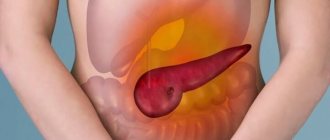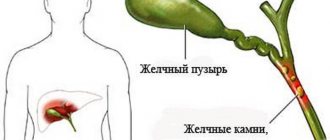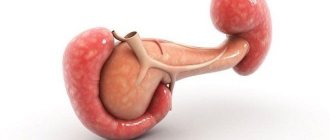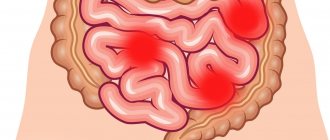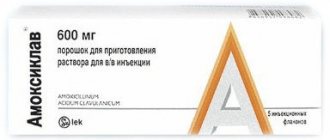Pseudotumorous pancreatitis is a chronic type of pancreatitis that is characterized by enlargement of one part of the pancreas. As medical practice shows, the head of the gland is most often affected. This formation over time puts pressure on nearby organs, in particular the gallbladder, which leads to obstructive jaundice and subhepatic hypertension. This feature of the disease implies mandatory differentiation from oncological neoplasms.
Classification
The disease is considered both within the framework of the general typology of chronic pancreatitis (CP), and as a phenomenon endowed with specific symptoms. Specificity is concentrated mainly on pathogenetic archetypes associated with pancreas enlargement:
- swelling (in the initial stage of chronic pancreatitis, with mild necrosis);
- cystosis (mostly secondary, noncongenital);
- tissue fibrosis;
- an increase in the number and size of stones in the body and ducts of the gland.
The formation of cysts is observed in 30% - 50% of patients. The development of obstructive jaundice due to edema or progression of fibrosis occurs, according to various sources, in 20% - 35% of cases. These categories overlap by approximately 30%.
Symptoms of pathology
This form of pancreatitis develops quite slowly. The transition from chronic pancreatitis to pseudotumorous pancreatitis can take 10 to 15 years.
Sometimes the real diagnosis is established only during an inpatient examination, and all this time the patient is unsuccessfully treated for gastric dyskinesia, chronic cholecystitis or liver disease.
The pseudotumorous form of pancreatitis has the following symptoms:
- obstructive jaundice;
- intense pain;
- nausea and vomiting;
- heterogeneous enlargement of the organ, revealed by palpation;
- large loss of body weight in a short period of time;
- insufficiency of the exocrine function of the pancreas, which is expressed in steatorrhea, unstable stool, the presence in it of undigested fragments of fiber and muscle fibers.
Ultrasound most often visualizes hypertrophy of the tissues of the head of the gland, the outlines of the organ are unclear with multiple pseudocysts, and dilation of the Wirsung duct is determined.
Symptoms of the disease
Along with the general characteristics of CP (abdominal pain radiating to the back, manifestations of dyspepsia), with pseudotumor pancreatitis the following subjective and objective markers are most pronounced:
- Pain in all pancreatic locations, but in the right hypochondrium is noted several times more often than in the left.
- Nausea, turning into vomiting at the peak of pain.
- Constipation or diarrhea in 35% - 40% of the course of the disease.
- Obstructive jaundice, accompanied by yellowing of the sclera, fingers, face and (sometimes) the skin of the entire body.
- A more severe and protracted clinical picture than, on average, with other forms of CP. Quite quickly leads to weight loss due to insufficient nutrition (for fear of causing an attack).
Important: the symptoms described are not mandatory and highly specific. A similar picture can be observed with stomach and duodenal ulcers, colitis, hepatitis, gastritis and pancreas malignant tumors.
Etiology
The disease can develop as a consequence of any form of CP. Its occurrence is facilitated by such “classical” factors as chronic alcoholism, malnutrition, drug poisoning, as well as smoking and other causes of prolonged stenosis of blood vessels, ducts and smooth muscles. Along with toxic-metabolic mechanisms, direct processes that anticipate pseudotumors are indicated: cystic formations, pseudo hypertrophies, as well as xanthogranulomatous pancreatitis.
Pathogenesis
Understanding the mechanisms of the disease by the patient is the first step not only on the path to recovery, but also in becoming responsible for one’s own health.
Let us consider modern views on the pathogenesis of pseudotumor pancreatitis.
The role of autoimmune processes
A distinctive feature of autoimmune pathology is intense inflammation, leading to cellular infiltration around the medium and large interlobular ducts. Gradually they become involved in the process. The infiltrate completely fills the canals, which promotes the growth of epithelial tissue in their lumen, creating a characteristic star-shaped structure. The walls are affected by preductal fibrosis. If sclerotic changes also affect the vessels, the glandular tissue loses its resistance to inflammation and destruction.
The head of the gland in pseudotumor pancreatitis of an autoimmune nature increases with a probability of 80%. The walls of the Wirsung duct thicken. In combination with pancreas pressure on the duodenum, this leads to impaired bile patency and cholecystitis. In severe cases, pathogenic processes in the liver are initiated.
Toxic-metabolic nature of pseudotumorous pancreatitis
Chronic ethanol poisoning or acute drug-induced inflammation significantly increases the protein concentration in pancreatic juice. Amino acid deposits are a kind of glue for duct calcification. Precipitation of CaCO3 into lumens under the influence of alcohol has been demonstrated in a series of postmortem studies.
The formation of stones, in turn, leads to obstruction of the ducts and ulceration of the epithelium of its walls. Ascending fibrosis and acinar dystrophy lead to chronic pancreatitis with the formation of cysts in the body of the gland and calcifications (stones, calculi) in the ducts.
Mechanism of occurrence
The destructive process in the pancreas begins with the activation of enzymes (trypsin, phospholipase, etc.), causing swelling and self-digestion of its tissue, which leads to cell death and necrotization of areas of the gland.
To avoid the penetration of tissue breakdown products into the bloodstream, the body turns on a protective mechanism - it limits the spread of toxins, protecting the foci of necrosis with connective tissue with the formation of pseudocysts (formations filled with necrotic masses). With each exacerbation of the disease, the formations become more and more numerous, and as a result of inflammation, the gland swells.
Subsequently, the surface of the pseudocysts calcifies, which after 10–15 years leads to compaction and enlargement of the organ. This mechanism, on the one hand, protects the body from intoxication and death, but on the other hand, it leads to significant hypertrophy of the gland and compression of adjacent organs.
Over time, compression of the following organs occurs:
- bile ducts,
- duodenum,
- portal and splenic veins.
NATALIA LUKINA: “How did I manage to defeat pancreatitis at home in 1 week, spending 30 minutes a day?!” Read more >>
As a result, the well-being of a patient with pancreatitis as a result of damage to adjacent organs deteriorates even more.
Diagnosis of the disease
After a doctor’s assessment of the history and symptoms, suspicion in most severe cases falls on chronic pancreatitis. A mandatory stage of a comprehensive examination is the determination of the values of key biochemical parameters. Pseudotumorous pancreatitis may be indicated by:
- Increased levels of bilirubin, leukocytes, enzymes (trypsin, amylase) and specific acids in the blood.
- Dynamic growth of ESR (when comparing two analyzes with a short time interval).
- Exceeding the physiological norm in the values of bilirubin and amylase in the urine.
X-ray examination and/or computed tomography using contrast fluids show an enlargement of the pancreas and a change in its shape. The images show individual or combined morphological signs of pseudotumor pancreatitis. In addition to the general characteristic - enlargement of the organ - the heterogeneity and tuberosity of the structure indicates fibrosis of the glandular part, and local contrasts indicate the presence of stones.
To study the patency of the ducts, minimally invasive endoscopic intervention is used.
The mandatory list of studies includes an analysis of the condition of the gallbladder and its ducts.
A specific test is an analysis for serological markers. In autoimmune pseudotumors, serum IgG4 concentration rises to pathological levels.
Used as a confirmatory action and trial of steroid therapy. Pseudotumorous pancreatitis against its background shows a significant decrease in inflammation and pain.
What it is
Pseudotumorous pancreatitis refers to one of the morphological varieties of the chronic form of ordinary pancreatic inflammation. This deviation is characterized by fibrosis, hypertrophy of parenchymal tissue and inflammation. In this case, a significant local increase in one of the parts of the organ occurs and areas with a very high density appear.
Important! Such a change requires additional examination in order to conduct a differential diagnosis with a tumor process (“pseudo” - false, “tumor” - tumor).
There are no exact statistics on this form of pancreatitis: doctors rarely prescribe an intravital biopsy, which can confirm the assumption. Recently, there has been a tendency to increase the number of patients with this pathology.
Depending on the characteristics of the manifestation, two main forms of pseudotumor inflammation are distinguished:
- with duodenal obstruction;
- with stagnation of bile.
Differential diagnosis
Unfortunately, most pseudotumorous diseases in advanced stages are extremely difficult to separate from pancreatic cancer.
Analyzes of tumor marker values give a positive answer for malignant tumors with a high probability only if pancreatitis is excluded.
The opinions of oncologists and pancreatologists on the indicativeness of histological studies of biopsy data often differ. The fact is that when taking a sample, an insufficient amount of material may be collected, and it can be very difficult to get a needle into a small cluster of cells.
At the same time, parallel ultrasound examination with fine-needle biopsy significantly increases the effectiveness of differentiated diagnosis. If there is any doubt about the diagnosis, make sure that your doctor refers you to this test.
Since surgical interventions are sometimes carried out according to situational indications, the final detection of cancer is carried out intraoperatively. A reliable sample is taken and sent for an urgent biopsy, the results of which may influence the further course of the surgical intervention.
Treatment
Indications for surgical intervention are:
- obstruction of the Wirsung duct;
- complications of hemorrhagic type;
- duodenal obstruction;
- cystosis with the development of suppuration;
- Development (or risk) of drug addiction with long-term unsuccessful treatment of pain syndrome.
Cysts are usually operated on using minimally invasive methods.
Conservative therapy includes taking analgesics, antispasmodics and enzyme replacement (most often pancreatin). Antibiotics are prescribed if necessary.
The diet in the initial stage of the disease includes a predominance of protein foods and moderately mineralized water. The optimal tactic for periods of exacerbations is fasting for several days (with intravenous nutrition). Then gradually introduce boiled, ground porridge and lean meat.
Forecast and prospects
Pseudotumorous pancreatitis is the most complex variant of the course of chronic pancreatitis. Diagnosis of the disease reveals the presence of a whole complex of serious problems with the gastrointestinal tract. At an advanced stage of the disease, surgical intervention is indispensable. The good news is that all types of resections and drainages have been worked out in specialized clinics to such an extent that the risk of complications after manipulation is not much higher than that for ordinary appendicitis. But maintaining health is still much easier than regaining it...
Measures to prevent pseudotumor pancreatitis, with few exceptions, coincide with general recommendations for the prevention of chronic inflammation of the pancreas. This is, first of all, giving up strong alcohol or completely eliminating all types of it (if you are already sick). The next most important factors, which depend on the people themselves, are moderation in food, adherence to a daily routine and quitting smoking.
Please pay special attention: given the relevance of autoimmune and infectious (mycoplasma) etiology, it is advisable not to test the body’s energy strength. To do this, you should protect yourself from completely unnecessary colds, injuries, prolonged depression and unprotected sex.
How does chronic pseudotumor pancreatitis manifest?
It may take 10-15 years from the moment of diagnosis of “chronic pancreatitis” to the development of the pseudotumorous form. Often the patient is completely treated for liver disease, chronic cholecystitis or biliary dyskinesia, and the real diagnosis becomes clear only after a detailed examination during a hospital stay. In approximately 5% of patients with chronic pancreatitis undergoing inpatient examination, a pseudotumorous form is detected. In approximately 7 out of 10 patients, the disease is diagnosed at the stage of development of complications.
In this case, the following symptoms attract attention:
- Severe pain syndrome.
- Serious weight loss in a short period of time.
- Uneven enlargement of the pancreas, determined by palpation of the abdomen.
- Violation of the exocrine function of the organ by type of failure - unstable stool, steatorrhea (“fatty feces”), a large amount of undigested fiber and muscle fibers.
- A typical picture during ultrasound diagnostics: proliferation (usually) of the tissues of the head of the pancreas, expansion of the Wirsung duct, loose, blurred contours, interspersed with pseudocysts.

